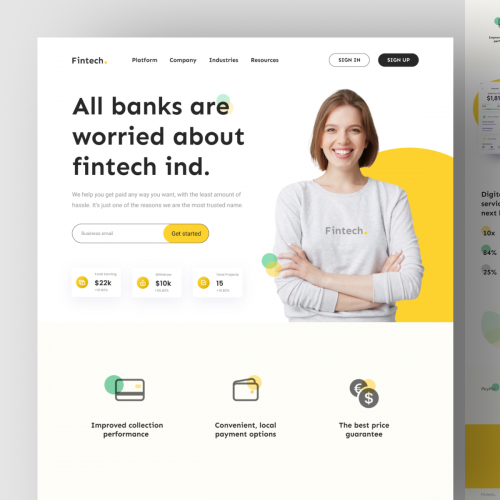Reasonably-Priced Website Design Packages for Startups
Reasonably-Priced Website Design Packages for Startups
Blog Article
Leading Tips for Developing an Impactful Web Site Design That Transforms
To achieve this, one need to think about a selection of elements, consisting of comprehending the target audience, prioritizing user experience, and optimizing for mobile platforms. The calculated use of compelling call-to-actions and a distinct aesthetic hierarchy plays an important function in leading individuals via their journey.

Understand Your Target Market
Recognizing your target audience is essential to efficient web site style, as it lays the groundwork for developing an appealing user experience. Recognizing who your individuals are, including their demographics, preferences, and actions, allows designers to customize the web site's material, layout, and capability to satisfy certain needs.
Carrying out thorough market research is crucial in this procedure. Studies, interviews, and analytics can provide useful insights into individual expectations and pain points. By assembling this information, designers can produce individual characters that stand for various segments of the audience, making certain that style decisions are notified and appropriate.
Furthermore, understanding the target audience helps in picking ideal design elements such as color plans, typography, and imagery that reverberate with individuals. A web site that talks straight to its target market promotes a feeling of link and trust, motivating longer gos to and higher conversion prices.
Eventually, a user-centered technique to site style not just enhances individual fulfillment however also supports organization objectives by driving involvement and commitment. By focusing on the demands and choices of the target market, an internet site can properly serve its objective and achieve wanted results.
Prioritize User Experience
To boost the total effectiveness of an internet site, focusing on user experience (UX) is necessary (Website Design). A well-designed UX ensures that site visitors can navigate the website easily, find information swiftly, and engage with material meaningfully. This leads to raised individual satisfaction and higher conversion rates
Begin by executing intuitive navigation. Menus needs to be practically structured, enabling users to situate key areas of the website with minimal initiative. Uniformity in layout components, such as color pattern and typefaces, fosters experience, which is essential for keeping individual engagement.
Furthermore, take into consideration the filling speed of your website. A delay of just a couple of seconds can result in significant drop-offs, as users are less likely to await a slow-loading page. Improving images and maximizing code can enhance performance and preserve visitors.
By focusing on customer experience, you not only develop a much more delightful atmosphere for visitors but additionally enhance your brand's reliability. Inevitably, a focus on UX is an investment in the long-term success of your website.
Maximize for Mobile Instruments
Optimizing for mobile phones is important in today's digital landscape, where a boosting variety of individuals access web sites with smart devices and tablets. A mobile-friendly style not just boosts individual experience however also plays a considerable duty in improving online search engine rankings. To accomplish this, it is necessary to adopt a receptive design that instantly gets used to various display sizes and alignments.

Filling rate is an additional crucial element; mobile users are usually less patient and expect fast accessibility to details. Enhance images and utilize internet browser caching to boost performance. Lastly, test your website on multiple gadgets and screen resolutions to recognize and fix any kind of prospective usability issues. By focusing on mobile optimization, you guarantee that your internet site continues to be affordable and effectively engages a broader audience.
Usage Compelling Call-to-Actions
An internet site's effectiveness usually rests on its ability to lead visitors towards desired activities, making compelling call-to-actions (CTAs) important elements of layout. CTAs work as the critical points that direct individuals to involve with the site, whether that implies purchasing, signing up for a newsletter, or downloading a resource.
To create effective CTAs, clarity is extremely important. Use succinct language that plainly interacts the action you desire the user to take.
Additionally, the style of CTAs need to attract attention without being meddlesome. Use contrasting colors and clear fonts to their website guarantee they capture attention. Additionally, think about utilizing directional cues, such as arrowheads or pictures, to lead users towards these switches. By concentrating on these aspects, services can considerably enhance user engagement, driving conversions and inevitably accomplishing their web site's objectives.
Concentrate On Visual Pecking Order
Reliable web site layout depends greatly on a well-structured visual hierarchy that guides users with material effortlessly. By organizing elements in a way that focuses on info, designers can boost individual experience and promote decision-making. This involves using size, shade, contrast, and spacing strategically to accentuate one of the most essential components of a webpage.
The use of larger font styles for headings and subheadings develops a clear distinction in between various areas, allowing customers to check material effortlessly. Furthermore, utilizing contrasting shades for buttons and calls-to-action can catch customer interest and encourage interaction. Whitespace is one more essential element; it prevents mess and makes it possible for customers to concentrate on crucial messages without disturbances.
Photos and graphics need to enhance the message while likewise sticking to the established hierarchy, reinforcing the total message (Website Design). Uniformity in design aspects, such as color pattern moved here and typography, additional strengthens the visual hierarchy, making navigation intuitive

Conclusion
In conclusion, effective web site layout requires an extensive understanding of the target audience, prioritization of individual experience, and mobile optimization. Inevitably, a well-executed website style serves as an essential element in driving individual activities and achieving business objectives.
Report this page